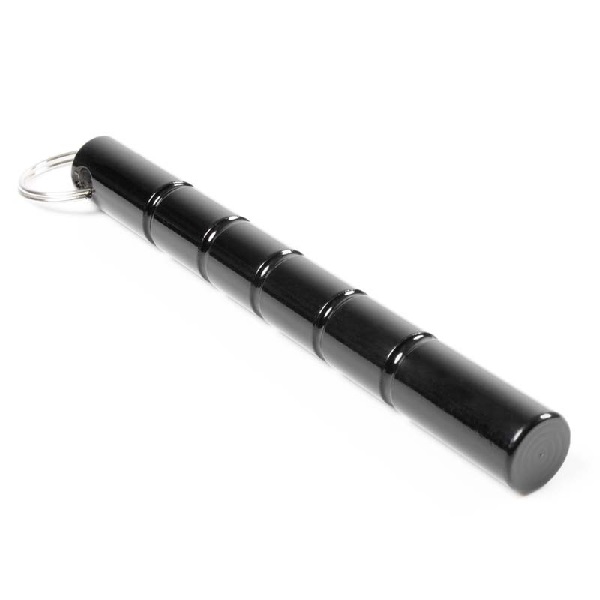
Martial arts have been a part of human culture for centuries, and the use of weapons is an essential aspect of it. One of the most popular and effective martial arts weapons is the Kubotan. Kubotan is a self-defense tool that is easy to carry and can be used in a variety of situations. In this article, we will explore what Kubotan is, how to use it and how it can benefit you.
What is a Kubotan?
Kubotan is a small stick-like weapon that is around five to six inches long and usually made of metal or hard plastic. It was developed in the late 1960s by Takayuki Kubota, a Japanese martial artist. It is designed to be used as a keychain, which makes it easy to carry around.
Kubotan is a versatile weapon that can be used in various ways. It can be used to strike pressure points, joints, or soft tissue. It can also be used as a lever to apply pressure or force to an attacker’s wrist or fingers, making it an effective self-defense tool.
Kubotan Origin
The Kubotan keychain has its origins in a small bamboo weapon known as a hashi stick, an invention by Denjiro Kubota, the father of Kubota.
Its popularity surged between 1969 and the 1970s when Kubota crafted the weapon at the request of Edward M. Davis, a former Chief of the Los Angeles Police Department. He initiated training for female officers on how to use the weapon. The Kubotan is highly praised for its effectiveness in subduing unruly suspects with painful locks and strikes to pressure points. As a result, it has earned the nickname instrument of attitude adjustment.
Design
Kubotan is a popular self-defense weapon that is widely used around the world. It is a versatile tool that can be used in a variety of ways to protect oneself. In this section, we will explore the construction of Kubotan and the different materials that are used to make it.
Construction of Kubotan
Kubotan is a small, cylindrical weapon that is approximately five to six inches long. It is designed to be held in one’s hand and used for self-defense. The construction of Kubotan can vary depending on the manufacturer and the materials used.
Kubotan can be made from different materials such as metal, plastic and wood. Let’s take a closer look at the different materials and their properties.
Metal Kubotan
Metal Kubotan is one of the most popular types of Kubotan. It is typically made from aircraft-grade aluminum, which is a lightweight and durable material. Metal Kubotan is also resistant to corrosion, making it ideal for use in all weather conditions.
The construction of a metal Kubotan typically involves machining the material to create a smooth and even surface. Some metal Kubotans may also have a textured grip to improve the user’s hold on the weapon. The ends of the Kubotan can be rounded or pointed depending on the intended use.
Plastic Kubotan
Plastic Kubotan is another popular type of Kubotan. It is typically made from high-strength polycarbonate, which is a durable and lightweight material. Plastic Kubotan is also resistant to impact and can withstand high amounts of pressure.
The construction of a plastic Kubotan involves molding the material into the desired shape. The ends of the Kubotan can be rounded or pointed depending on the intended use. Some plastic Kubotans may also have a textured grip to improve the user’s hold on the weapon.
Wooden Kubotan
Wooden Kubotan is less common than metal and plastic Kubotans. It is typically made from hardwood such as oak, which is a strong and durable material. Wooden Kubotan is also resistant to impact and can withstand high amounts of pressure.
The construction of a wooden Kubotan involves carving the material into the desired shape. The ends of the Kubotan can be rounded or pointed depending on the intended use. Some wooden Kubotans may also have a textured grip to improve the user’s hold on the weapon.
The Kubotan is a versatile and effective self-defense tool that can be made from different materials such as metal, plastic, and wood. Each material has its properties, and the choice of material depends on the user’s preferences and the intended use of the weapon. Regardless of the material used, Kubotan is a reliable tool that can help protect oneself in dangerous situations.
How to use a Kubotan
Using a Kubotan requires some training and practice. The first step is to familiarize yourself with the weapon and its features. Hold the Kubotan in your hand and experiment with different grips and strikes.
One of the most effective ways to use a Kubotan is to strike pressure points on the attacker’s body. Some of the most vulnerable points include the temples, neck, throat, solar plexus and groin. A well-placed strike can incapacitate the attacker and give you time to escape.
Another way to use a Kubotan is to apply pressure or force to an attacker’s wrist or fingers. This can cause pain and make it difficult for the attacker to hold onto you. It can also be used to control the attacker’s movements or to disarm them.
In self-defense, the primary targets are usually the bony, fleshy, and sensitive areas such as the knuckles, forearms, bridge of the nose, shins, stomach, solar plexus, spine, temple, ribs, groin, neck, and eyes. The Kubotan, measuring between 13 – 15cm (5–6 in), can easily be concealed within one’s hand. It is typically held in an icepick grip for hammer fist strikes or a forward grip for stabbing, pressure point attacks and grabbing.
The Kubotan is commonly used to harden the fist for punching, targeting vulnerable parts of an attacker’s body, and gaining leverage over an assailant’s wrist, fingers, and joints. When keys are attached, it can serve as a flailing weapon. As a pressure point weapon, the Kubotan can target any point that a finger can reach but with greater penetration due to the smaller surface area at its ends.
For instance, a Kubotan weilder may encircle an offender’s neck with their arm while simultaneously pressing the end of the Kubotan into the small of the attacker’s back. Alternatively, they might reach around the suspect’s neck and underarm from behind, causing pain by jabbing the end of the Kubotan into the top of the pectoral muscle. In other locking and compliance situations, the Kubotan’s body can be used to inflict pain, this is another reason why Kubotan have been called ‘Ouch Sticks’.
A common pain compliance method involves grabbing an attacker’s wrist and enclosing both hands around it with the Kubotan lying across the radius bone. Downward pressure is then applied to the bone to subdue the attacker.
Benefits of using a Kubotan
Kubotan is an effective self-defense tool that has several benefits. Firstly, it is easy to carry around. As it is small and lightweight, it can be attached to your keychain or carried in your pocket. This means that you can have it with you at all times, making it a convenient tool for self-defense.
Secondly, Kubotan is a non-lethal weapon. Unlike firearms or knives, Kubotan is designed to incapacitate an attacker without causing serious harm. This makes it a safer option for self-defense, especially in situations where the use of deadly force is not necessary.
Lastly, Kubotan can be used by anyone, regardless of their size or strength. It is a weapon that relies on technique rather than physical strength. This means that even a small person can use it effectively against a larger attacker.
Final Thoughts
The Kubotan is a versatile and effective self-defense tool that can be used by anyone. It is easy to carry, non-lethal, and can be used in a variety of situations. With some training and practice, you can learn how to use Kubotan effectively to protect yourself in dangerous situations.
Wishing to Explore More?
We hope this article piqued your interest. If you wish to delve deeper into traditional martial arts weaponry, we encourage you to read the articles provided below.
Next Martial Arts Weapons article: The Bagh Nakh: Traditional Indian Martial Arts Weapon
Previous Martial Arts Weapons article: Tekko Okinawan Martial Arts Weapon
Immerse yourself in this article that explores a vast array of Martial Arts Weapons right here at Dojo Directory.

